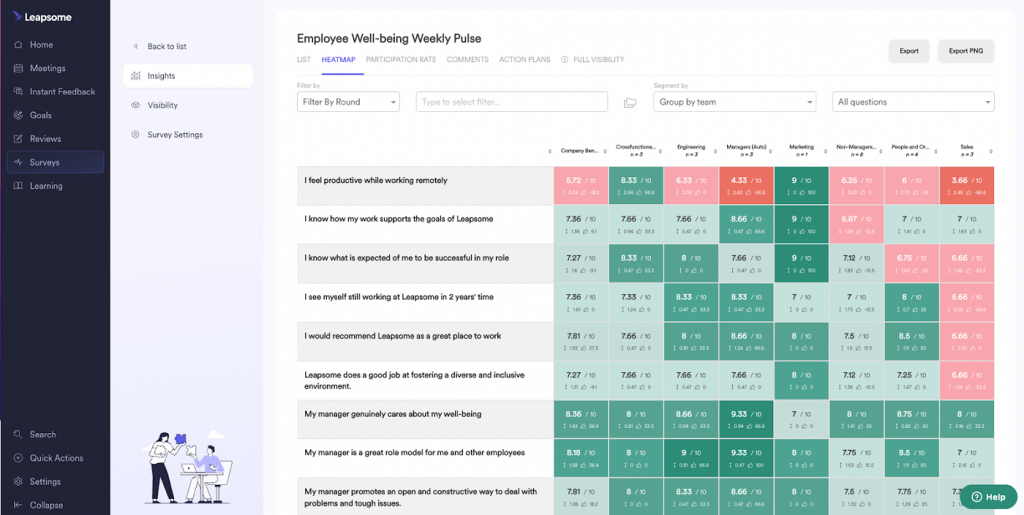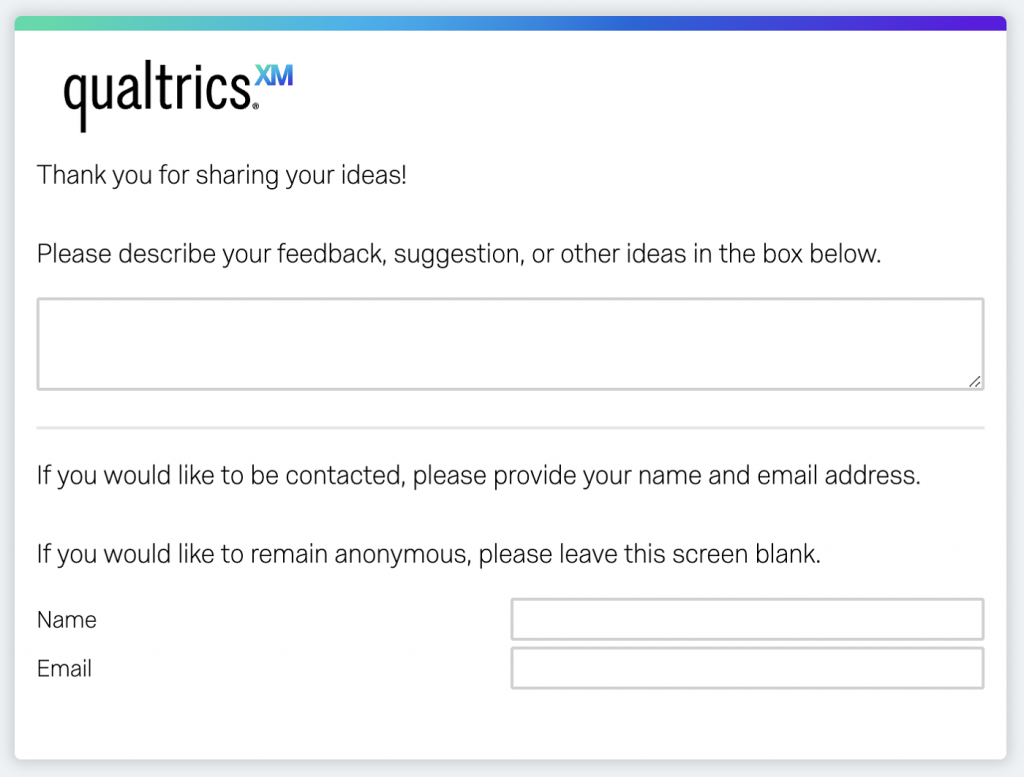Key takeaways
What is employee satisfaction?
In a nutshell, employee satisfaction measures how happy employees are with their jobs. Measuring employee satisfaction is a strategic effort to quantify what is usually considered more qualitative data; tactically, it helps determine the underlying causes of dissatisfaction and possible solutions that can improve employee satisfaction.
Depending on the business’s goals and available tools, business leaders can measure employee satisfaction directly, or they can take a more indirect approach by looking at variables like employee retention and turnover rate. Numerous factors impact employee satisfaction, including work-life balance, salary, and opportunities for advancement.
How to measure employee satisfaction
There are many strategies and tools for measuring employee satisfaction, including employee engagement surveys, suggestion boxes, one-on-one meetings, formal evaluations like eNPS and ESI, and other workplace analytics.
Check out our video overview below.
Employee engagement surveys
One of the easiest ways to learn what employees think about the company is to ask them directly. Employee engagement surveys can be customized to include a combination of numerical ratings and long-form responses. They can be sent at specific times of the year — such as once a quarter — or left open around the clock to gather feedback throughout the year.
Potential questions to incorporate in an employee engagement survey include the following:
Google Forms and similar free tools offer a simple way to create and send surveys and track results. However, these basic tools aren’t specifically designed for employee engagement and won’t provide the same insight as a more advanced tool. They also may not integrate with your HR reporting system, a necessary piece of the puzzle to maximize the data’s value.
A dedicated employee engagement software solution such as Leapsome makes it easy to generate employee surveys and calculate results. Likewise, robust HR software suites, such as Workday, also include employee engagement modules as a core functionality or optional add-on.

Suggestion boxes and forms
Employee suggestion boxes give employees a place to make open-ended comments and suggestions about what’s working and what can be improved within the company. Suggestion boxes are typically open year-round and may be used in conjunction with employee engagement surveys that are sent out at specific times.
Suggestion boxes are usually anonymous, giving employees more freedom and security to voice their thoughts. You can also configure suggestion boxes to include optional contact information fields that employees can fill out if they want to receive a follow-up message.
For onsite employees, you can set up a physical suggestion box with note cards and pens in common areas such as the break room. You can also create a form to collect responses virtually using software such as Google Forms or Qualtrics. This option may be preferable if your company is remote or hybrid, or if paper responses would be logistically tricky because you have multiple locations.

One-on-one meetings
If your business aims for a company culture based on transparency and trust, then managers should gauge employee satisfaction during the performance review process and other one-on-one meetings. Some questions to ask during these meetings include:
Performance management software can help supervisors document employees’ answers to these questions as well as other notes for future reference. These systems also remind managers when it’s time to schedule a check-in, reducing manual follow-up requirements for HR staff.
When used consistently, performance management software allows managers and companies to track employee satisfaction both individually and in aggregate.
Find the right tool for your organization in our Performance Management Software Guide.
Employee Net Promoter Score (eNPS)
The Employee Net Promoter Score is inspired by the original Net Promoter Score, which measures customer loyalty. To calculate eNPS, ask employees the following question, verbatim: “On a scale of zero to 10, how likely are you to recommend [company name] as a place to work?”
Responses are then sorted into three groups:
- Promoters: People who answered nine or 10.
- Neutral: People who answered seven or eight.
- Detractors: People who answered zero through six.
The eNPS equals the percentage of detractors minus the percentage of promoters.If doing all that math sounds complicated, then try using an HR system such as Deel, which already has built-in eNPS capabilities. This software makes it simple to send out a survey, compile responses, and calculate the eNPS in just a few clicks.

Employee Satisfaction Index (ESI)
Another popular HR metric is the Employee Satisfaction Index, or ESI. This measurement determines employee satisfaction levels based on three questions instead of one, so it’s slightly more complex and nuanced than eNPS.
Employees must rank the following questions from one to 10:
The following formula calculates your ESI:
(Question mean value/3) x 100 = ESI
As you can see, calculating ESI isn’t as straightforward as eNPS, which is why we recommend leveraging software tools instead of doing manual calculations.
Other workplace analytics
Other HR metrics that indirectly measure employee satisfaction help create a fuller picture of your employees’ fulfillment and happiness in their roles. Some metrics to track include turnover rate, retention rate, and absenteeism.
Workforce analytics tools like BambooHR’s reporting module can track these variables for you and compile them into easy-to-understand charts.

Benefits of measuring employee satisfaction
Measuring employee satisfaction offers many benefits for both workers and employers.
From the business perspective, it’s an opportunity to gather employee feedback and identify potential blind spots to improve business outcomes. Additionally, taking the time to show you care about improving employee satisfaction can increase employee engagement and productivity, as well as overall satisfaction with the organization’s receptivity to their needs.
Measuring employee satisfaction provides quantifiable feedback about what’s working and what can be improved, giving the HR team hard numbers rather than assumptions and conjecture. It’s also beneficial for determining if changes — such as switching benefits packages or starting a DEI program — are having the desired impact on employee satisfaction.
Ready to get started with improving employee satisfaction? Check out our top picks for the best employee engagement software of 2023 to improve your employee satisfaction management processes.





